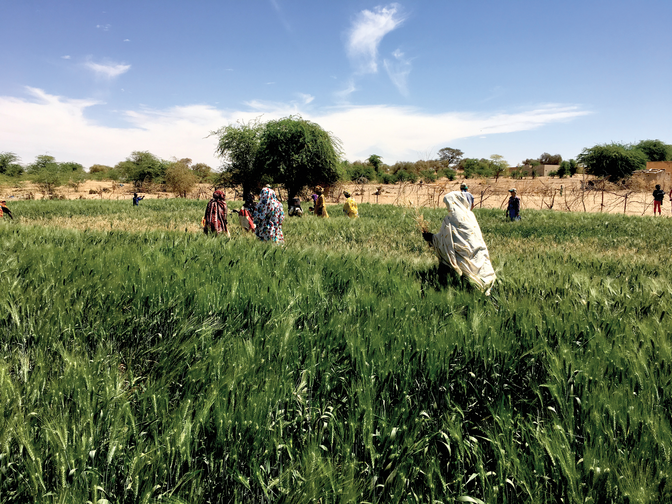Preparing Wheat to Face Rising Temperatures Through Improved Heat Tolerance

Durum wheat (Triticum durum Desf.) is affected by heat stress and rising temperatures. Breeding heat‐tolerant crops requires identifying loci associated with the heat‐tolerant response.
The Senegal River basin represents a typical West African savannah scorched by temperatures well beyond 32°C. Researchers took advantage of these warm temperatures to test the capacity of several global durum wheat varieties at two research farms in Mauritania and Senegal. Over two seasons, they confirmed that for each 1°C of temperature rise, the crop loses 6% of production though some of the tested wheat lines tolerated heat better than others. To understand which genes were responsible for the tolerance response of some of the lines, the researchers used genome‐wide association studies to identify a total of five genomic regions, three of which they found combined to increase productivity by 16% under heat stress.
These findings will allow breeders worldwide to improve the heat tolerance in their future varieties, helping to prepare wheat to face global warming.
Adapted from
Sall, A. T., Kabbaj, H., Menoum, S. E., Cisse, M., Geleta, M., Ortiz, R., & Bassi, F. M. (2023). Durum wheat heat tolerance loci defined via a north–south gradient. The Plant Genome, e20414. https://doi.org/10.1002/tpg2.20414
Text © . The authors. CC BY-NC-ND 4.0. Except where otherwise noted, images are subject to copyright. Any reuse without express permission from the copyright owner is prohibited.







